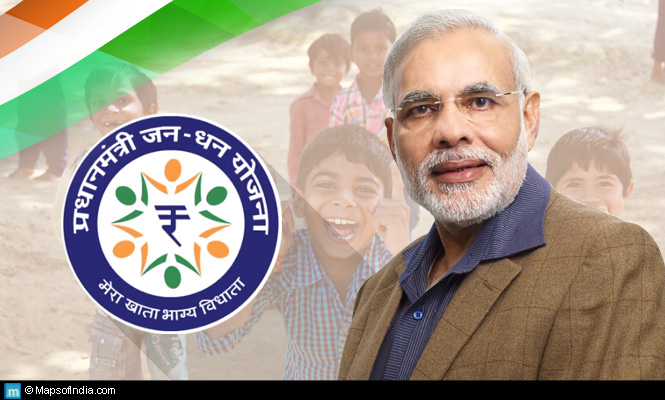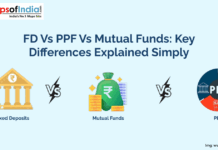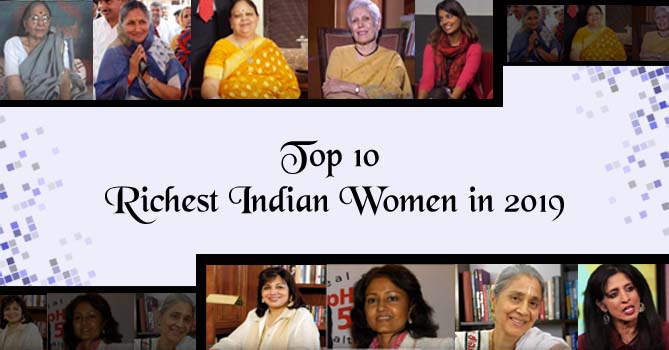 Prime Minister Narendra Modi wants to end financial untouchability in the country through an ambitious financial inclusion scheme on mission mode. Therefore he launched the world’s largest financial inclusion scheme, Pradhan Mantri Jan-Dhan Yojna (PMJDY) on August 28 last year and perhaps wrote a success story as target was met ahead of schedule. The scheme, essentially, aims to liberate the poor from the vicious circle of deprivation and exclusion.
Prime Minister Narendra Modi wants to end financial untouchability in the country through an ambitious financial inclusion scheme on mission mode. Therefore he launched the world’s largest financial inclusion scheme, Pradhan Mantri Jan-Dhan Yojna (PMJDY) on August 28 last year and perhaps wrote a success story as target was met ahead of schedule. The scheme, essentially, aims to liberate the poor from the vicious circle of deprivation and exclusion.
Nearly 100 per cent coverage of households across the country with 12.51 crore accounts so far indicates that the mission is almost accomplished and now it is high time to strengthen the service delivery system with focus on rural households. Without a very effective service delivery system, this scheme would remain account-centric and there will be no visible signs of improvement.
The PMJDY has entered the Guinness World Records for opening the highest number of bank accounts in the shortest time. According to official data, 12.51 crore new bank accounts have been opened. The target under the scheme was to open 10 crore accounts by January 26, 2015, but this mission was accomplished a month ahead of the deadline. Nearly 100 per cent of the households (99.74) in the country have been covered. State-run banks took the lead in this mission and opened nearly nine crore accounts whereas rural banks opened about two crore accounts. With less penetration in the rural areas, 13 private sector banks together opened nearly 45 lakh accounts. In terms of numbers, more accounts (7.31 crore) have been opened in the rural areas and this constitutes nearly 60 per cent of the total new accounts. However, so far there is no official figure about the deposits in these accounts in the rural India. The total deposit mobilization of Rs 10,155 crore would have been more impressive, had at least 50 per cent of this come from the rural areas. But there is no official data available so far.
Old vs new scheme
Lack of access of financial services hinders the growth of the country. Previous governments strived to address this challenge. The previous UPA Government had also emphasized on financial inclusion but the focus was on villages rather than households.
A financial inclusion scheme ‘Swabhiman’ was launched in 2011 by the UPA Government. But under this scheme, out of 5.92 lakh villages in the country only 74,000 could be covered. It proves that the approach was wrong and the bankers were reluctant. The major change with PMJDY is that households are being targeted instead of only villages as earlier. Moreover, the Swabhiman focused on rural areas only whereas the new scheme has attached equal importance to urban areas as well.
Dormant accounts: A big worry
The deposits so far look impressive but that only one-third are active is cause for alarm. Most of the accounts opened are ‘zero balance’ accounts. The official figure indicates that 72 per cent of the newly-opened accounts are dormant. As on January 27, the total number of accounts opened under the scheme stood at 12.51 crore, out of these 8.25 crore are ‘zero balance’ accounts. Deposits in these accounts crossed Rs 10,000 crore. However, the survey report of the Finance Ministry or the official website would not reveal the fact that most of these deposits are in urban areas. Bankers are of the view that unless there is clarity over fixed-point Business Correspondent ( BC) or Bank Mitra model, the scheme would not be successful in its goal to end financial untouchability and eradicate poverty in the rural areas.
Under PMJDY, to get all benefits such as overdraft up to Rs 5,000, life insurance coverage of Rs 30,000, accidental issuance of Rs 1,00,000, account holders need to keep their account active. Dormant account causes big worry because if people are not motivated enough to keep their account active, it would adversely impact the Government’s plans to make direct benefit transfer universal to reduce the subsidy burden by plugging the holes (leakages).
The Government needs to incentivise the banks to take up measures under their financial literacy programmes to motivate people to keep their account active. A higher transaction commission under direct transfer can be another incentive.
The BC model
The real success of the scheme is heavily dependent on the operationalisation of an efficient BC model. It is true that we do not have adequate banking infrastructure across the country especially in rural India. The BC model would provide the banks much-needed service support. However, they need to be adequately compensated as one per cent transaction fee is far less than necessary. The Government has agreed ‘in principle’ for two per cent fee. However, the BCs have pointed out that a three per cent fee minus any service tax would make the model very effective. Moreover, we need fixed-point BCs and the India Post, with 1.55 lakh post offices with nearly 90 per cent in the rural areas, can make the real change in terms of an efficient service delivery system.
The way forward
Going forward, we need to dump account-centric approach. From the day one, the focus was on increasing the numbers. Higher numbers helped in entering into Guinnes World Records. But for meaningful change, services should reach the masses efficiently and timely. Another challenge is making the PMJDY an effective tool for direct benefit transfer and for this unique identification ‘Aadhaar’ must be seeded with all accounts. So far nearly 30 per cent Aadhaar has been seeded under PMJDY. The banks need to raise the awareness of the customers for Aadhaar seeding and to use various channels including SMS, internet banking, ATMs for seeding of Aadhaar.
Moreover, nearly two crore new account-holders have not yet received their RuPay cards.
The process must be quick and time-bound.
Finally, the scheme will only be successful, if efforts are made to spread financial literacy. Financial literacy would help in keeping majority of accounts active. Banks must be asked to make efforts in coordination with various agencies and existing financial literacy centres to spread awareness on PMJDY, use of RuPay cards, insurance, overdraft etc.
Read more:
Pradhan Mantri Suraksha Bima Yojana (PMSBY)
Pradhan Mantri Jeevan Jyoti Bima Yojana (PMJJBY)
Jan Dhan Yojana Rolled Out – An Era Of Financial Inclusion Begins
Jan Dhan Yojana – Target Achieved, But Benefits Still Elusive
Jan Dhan Yojna a Big Hit, But Why Account Transactions Are Nil!
Jan Dhan Yojana – The Progress and the Roadblocks
Jan Dhan Yojna – Concern Over Multiple Accounts





